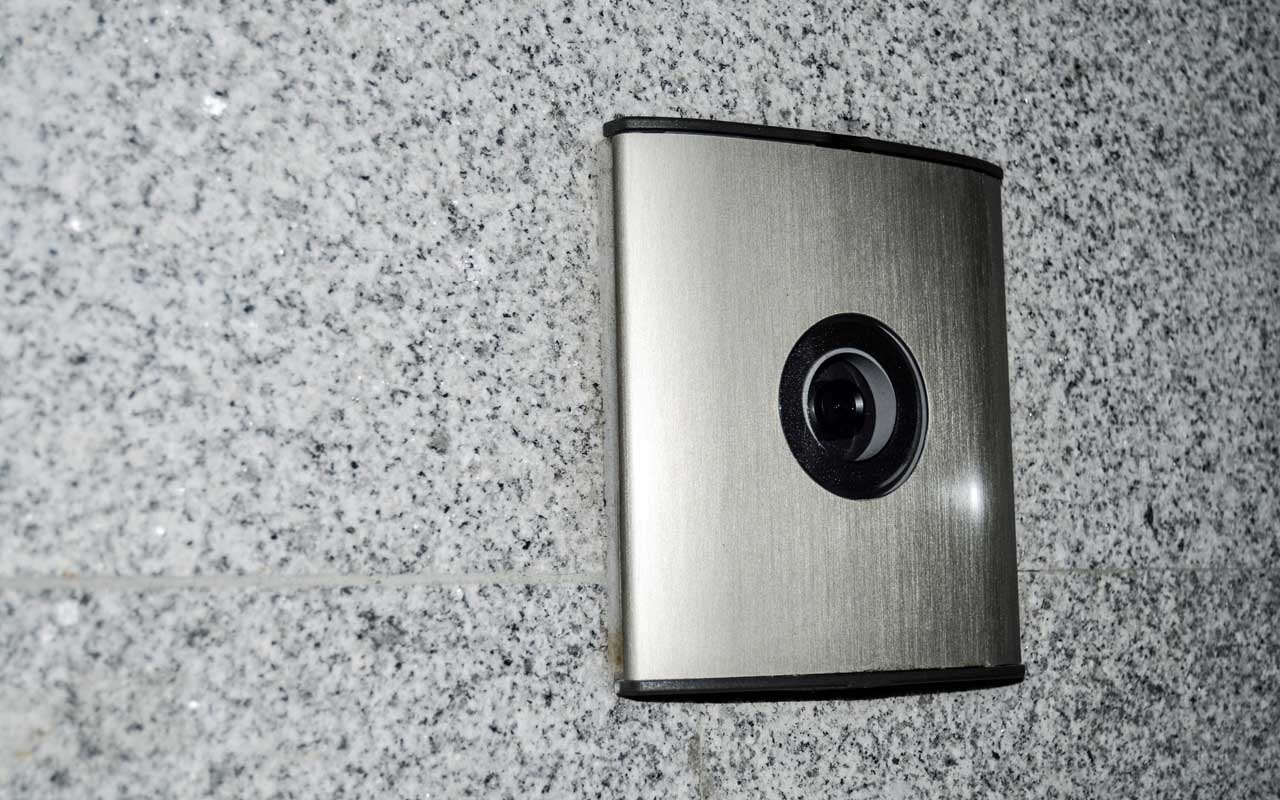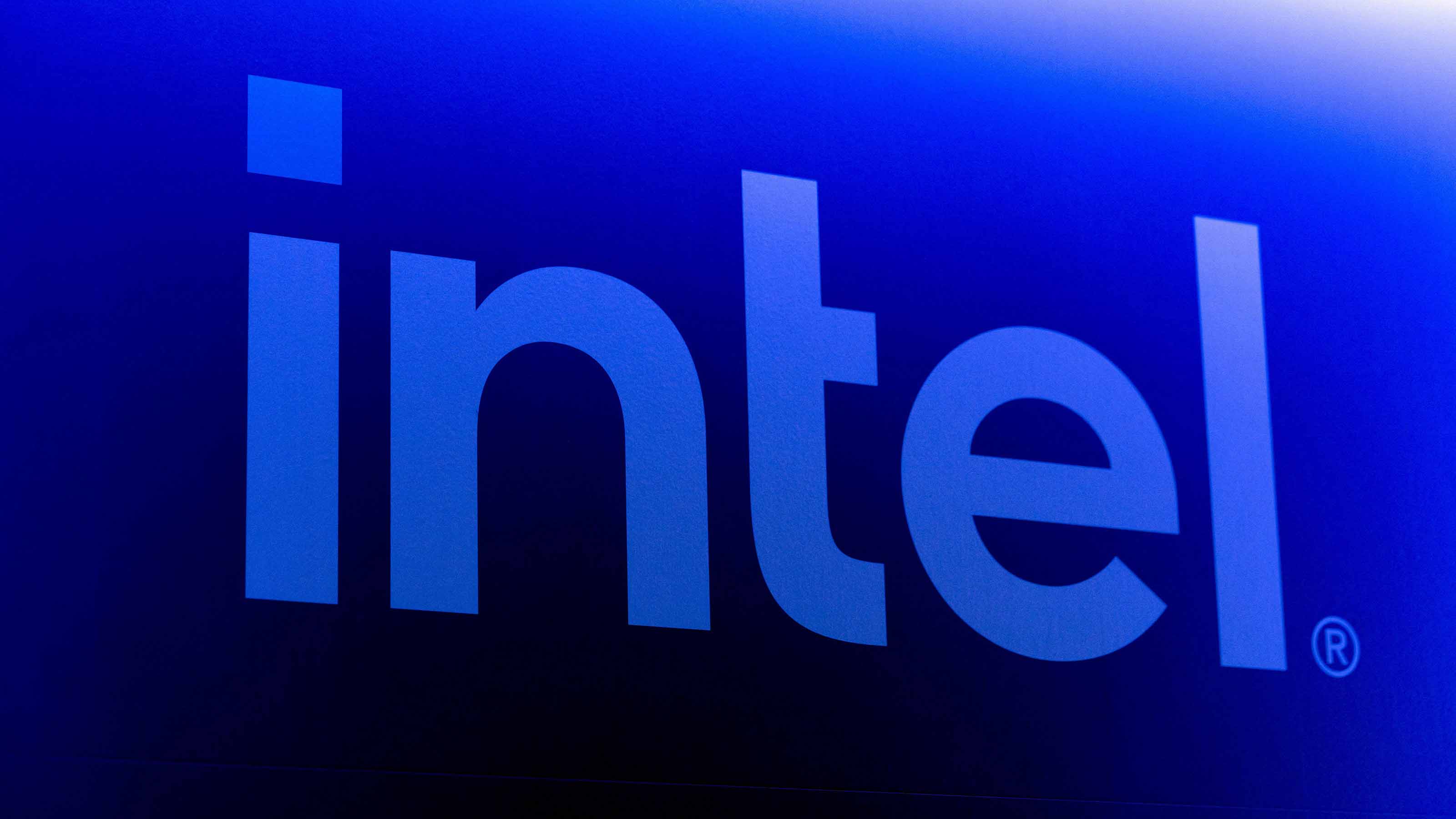13 Disastrous Stocks That Could Get Even Worse
Investors love a turnaround play, and Wall Street is littered with stories of fortunes made betting on troubled companies.


Investors love a turnaround play, and Wall Street is littered with stories of fortunes made betting on troubled companies.
In the 1960s, American Express (AXP) was rumored to be near bankruptcy when Warren Buffett famously entered what is now one of his favorite Berkshire Hathaway positions. Apple (AAPL), which became the first U.S. company to hit $1 trillion in market value, absorbed more than a decade of losses during the 1980s and ‘90s before Steve Jobs helped turn the company around – aided by a $150 million investment from Microsoft (MSFT).
But while every beat-up stock is a potential turnaround play, not every company achieves that potential. And losses can mount quickly for a stock that’s already up against the ropes. So while you might be tempted to dabble in a potential comeback story or two, beware of some of the most common traps that end in disaster.
Sometimes the issue is too much debt; rising interest costs and balloon payments can turn minor business setbacks into major liquidity challenges. Other times, once-powerful consumer brands are brought to their knees by management that’s too slow to adapt to evolving consumer tastes.
Certain areas of the market can be particularly prone to disasters. Start-up biotech stocks are risky because they’re racing against the clock to bring new drugs to market before their cash runs out. Disappointing clinical trial result, in these cases, can cut a stock’s value in half (or worse) within days. Chinese stocks are problematic, too, because of sometimes poor visibility and weak corporate governance.
Here are 13 stocks to sell if you own them, or avoid if you’re on the hunt for the next turnaround story. The companies themselves aren’t necessarily an extinction threat, but for varying reasons, they’re all on the brink of delivering more disastrous returns.
Data is as of July 19.

Arlo Technologies
- Market value: $302.2 million
- Six-month performance: -46%
- Arlo Technologies (ARLO, $4.04) develops products for smart homes such as security cameras, advanced baby monitors and smart security lights and recently introduced a doorbell product with integrated video. It spun off from its former parent Netgear (NTGR) and completed its IPO last August at $16 per share.
At the time of its offering, Raymond James analyst Madison Suhr rated ARLO at Market Perform (equivalent of Hold). He chalked that up to significant competition in the home security market, though he thought the company’s products had some key differentiators. Bank of America’s Nat Schindler started coverage at Neutral over concerns about competition from Amazon.com (AMZN) and Google parent Alphabet (GOOGL), as well as limited visibility into how Arlo would grow its subscription business.
However, ARLO shares lost almost half their value in a day in early February after management warned of weak 2019 results. The market’s growth slowed significantly in late 2018, leading to inventory buildups for Arlo and reduced 2019 growth expectations. The company eked out only 3.6% sales growth in the December quarter, partially due to the delayed launch of its new Arlo Ultra camera until after the holiday shopping season. Arlo’s revised 2019 guidance looks for sales well below analyst estimates and operating losses nearly double last year.
The company’s shares did rebound in April after better-than-expected March-quarter results. But they cleared a very low bar. Revenues fell almost 43% year-over-year. Operating losses swelled seven-fold.
The most recent analyst updates on ARLO stock came in February. Cowen analyst Jeffrey Osborne reduced his rating to Market Perform and dropped his price target from $25 per share to $7.50. He wrote that the challenging macro environment would produce further inventory buildup, and that Arlo’s heavy promotional spending would continue to materially impact margins. BofA’s Nat Schindler downgraded from Neutral to Underperform with a $5 price target.

Consolidated Communications Holdings
- Market value: $356.9 million
- Six-month performance: -55%
- Consolidated Communications Holdings (CNSL, $4.95) is a communication services provider that operates a 37,000-mile fiber optic network that extends across 23 states. Despite that position in a widely used technology, shares have lost more than 80% of their value since they peaked in late 2016. That included a roughly 60% plunge in April after the company eliminated its dividend so it could invest instead in upgrading its fiber optic network while also servicing $2.3 billion in debt.
This is quite a comedown for a once-reliable dividend stock that had paid dividends 55 quarters in a row.
Consolidated Communications also reported its sixth consecutive quarter of net losses in April, and management frankly acknowledges industry conditions are likely to remain challenging for at least another “five or six quarters.” Paid subscribers declined across all businesses lines. The company anticipates making $130 million to 135 million in interest payments on debt this year and investing $200 million to 210 million to make upgrades to its network, leaving not enough for dividends.
Several analysts weren’t pleased. Following the dividend cut, Raymond James’ Frank Louthan downgraded CNSL to Market Perform (equivalent of Hold) and Guggenheim’s Mike McCormack cut it to Sell. Wells Fargo analyst Jennifer Fritzsche cut her price target but actually upgraded her rating to Outperform. Her reasoning? Industry headwinds are factored into the stock’s recent drop, and cutting dividends should allow Consolidated Communications to pay down debt while making necessary upgrades to the fiber network.
Still, it’s a gamble on the company’s very survival.

ContraVir Pharmaceuticals
- Market value: $5.8 million
- Six-month performance: -84%
- ContraVir Pharmaceuticals (CTRV, $3.56) is dedicated to developing treatments for chronic liver disease.
CTRV’s share price has been on a roller-coaster ride lower since the company announced the departure of its CEO and COO last October, plunging from a split-adjusted $39 per share to below $4. Shares plunged more than 40% in April after the company priced a secondary offering of shares (secondary offerings add more shares to the market, thus diluting existing shareholders). The threat of delisting by the Nasdaq due to a low share price triggered a 1-for-70 reverse stock split in early June. What followed was a nauseating few days of trading in which shares lurched up and down amid upbeat study results and a slew of filings.
Just try to follow this. June 11: ContraVir shares soared after a peer-reviewed journal published positive research on its experimental liver disease treatment, CRV431. June 12: The company filed a registration statement for another share offering, which led to a slump in the stock. June 13: ContraVir filed a registration withdrawal request that sent CTRV soaring – but then it was discovered that the registration withdrawal request was not for the registration itself, but for a request that the registration be accelerated. Quickly after it was discovered that ContraVir used the wrong form, it filed a withdrawal of the withdrawal request. June 14: Shares slumped in response. June 17: A release of positive findings connected with CRV431 bumped shares back higher. June 18: CTRV shares suffered their worst-ever one-day decline (45%) after the company priced another secondary offering.
In short, ContraVir’s repeat secondary offerings show an urgent need for funding. The company has no revenues, $78.4 million of accumulated losses and less than $1.7 million of cash on-hand. Meanwhile, CRV431 is the company’s only pipeline product; it’s in early development and many years away from generating sales, assuming it ever gets approved. A 2018 MIT study shows only 14% of drugs that enter clinical trials eventually secure FDA approval. The path to commercialization also requires progressively larger, more expensive clinical trials; the Tufts Center estimates costs for bringing a single new drug to market can approach $2.7 billion.
The stock is very thinly covered by the analyst community. Maxim’s Jason McCarthy – one of the few analysts still paying attention to ContraVir – downgraded CTRV to Hold in March. He likes the company’s decision to focus all its resources on CRV431 but acknowledges significant additional capital will be needed to fund its development.

Dynagas LNG Partners LP
- Market value: $51.1 million
- Six-month performance: -65%
- Dynagas LNG Partners LP (DLNG, $1.44) owns and operates a fleet of six liquid natural gas (LNG) carriers that are leased to international gas producers under long-term charters.
The company’s underlying tanker business remains relatively healthy – its fleet fully deployed under nine-year charters – average daily rates on vessel leases are declining. March quarter day rates, for instance, dropped to $57,700 from $66,300 a year ago.
In addition, higher LIBOR rates are causing interest expenses on the company’s variable-rate debt to spike. Higher debt servicing costs were among the issues triggering a 76% decline in the company’s net income and a 18% EBITDA drop during the March quarter.
Dynagas is required to make a $250 million balloon payment on its debt in October and is seeking to refinance a total of $720 million of debt. Due to the company’s high leverage, financing terms of a new lending agreement being negotiated are increasingly restrictive; the lender requires Dynagas to stop paying distributions (dividend-like payments made by master limited partnerships) on its common units.
The company has a history of distribution cuts; quarterly payments were trimmed by 41% in 2018 and by an additional 75% in January 2019. Unsurprisingly, both cuts helped trigger massive share-price declines, and news that the common distribution might be eliminated altogether have further weighed on shares.
At least two analyst firms have downgraded DLNG so far in 2019, but haven’t yet put them into their ranks of stocks to sell. Jefferies analyst Randy Giveans cut his rating to Hold in January and sees limited upside for the stock in the near-term. B. Riley analyst Liam Burke was unpleasantly surprised by the size of the January dividend cut and reduced his DLNG rating to Neutral.

Endo International
- Market value: $739.6 million
- Six-month performance: -66%
Specialty drugmaker Endo International (ENDP, $3.27) is under fire from numerous state attorneys general and hundreds of city and county agencies, all of which have filed lawsuits over Endo’s opioid marketing practices.
Tennessee’s attorney general, for instance, says the company’s illegal sales tactics resulted in more sales of its prescription painkiller Opana in Knoxville over a seven-year period than in New York City, Los Angeles and Chicago combined. In the lawsuit, Endo management is accused of making claims about Opana’s safety that the drug couldn’t back. Endo pulled Opana from the market two years ago at the FDA’s request.
In addition to billions of dollars of Opana lawsuits, Endo is buried under a mountain of debt left behind by an acquisition-happy CEO. The company has $7.1 billion of net debt (debt minus cash) and negative shareholder equity and a debt-to-EBITDA (earnings before interest, taxes, depreciation and amortization) ratio of roughly 12.
The company has delivered two consecutive quarters of revenue growth and cut net losses to just 6 cents per share in the March quarter, from $2.23 per share in the year earlier. Endo also has a promising cellulite treatment in its pipeline – collagenase clostridium histolyticum (CCH) – that is performing well in late-stage clinical trials.
Nonetheless, JPMorgan analyst Christopher Schott downgraded ENDP stock to Underweight (equivalent of Sell) in May. He sees controversies surrounding CCH ahead of its anticipated 2020 launch and negative opioid headlines continuing to dominate the news. With few positive catalysts for ENDP this year, Schott thinks investors can find better opportunities elsewhere.

J. Jill
- Market value: $97.9 million
- Six-month performance: -66%
Shares of women’s apparel retailer J. Jill (JILL, $2.22) fell 73% in May during a broad-based apparel selloff that saw major names such as Lands End’ (LE) and Gap (GPS) lose more than 25% of their value. It has recovered a little bit since then but still has lost roughly two-thirds of its value over the past half-year.
J. Jill owns a chain of 283 women’s apparel stores nationwide. Like other brick-and-mortar retailers, the company is losing business to online merchants, but Jill also is plagued by weak execution and merchandise design. J. Jill CEO Linda Heasley blamed poor March-quarter results on a lackluster spring merchandise selection that lacked color and said the company hadn’t moved quickly enough to reset inventories. Management also acknowledged a too-rapid shift from catalog to digital offerings that hurt store traffic.
The company’s March-quarter EPS came in below even the lowest analyst estimate, and Jill cut its guidance for full-year EPS in half.
Deutsche Bank analyst Paul Trussell downgraded the stock to Hold at the end of May, referring to the EPS guidance as “ugly.” He also complained of merchandise assortment issues that required massive markdowns to reduce overstocked inventories.
To J. Jill’s credit, revenues have actually trended upward and its cash situation has actually improved over the past couple of years. But analysts are expecting a massive 72% decline in profits this fiscal year (from 72 cents per share to 20 cents per share), and only a modest recovery to 39 cents per share in its next fiscal year.

Marin Software
- Market value: $13.4 million
- Six-month performance: -67%
- Marin Software (MRIN, $2.23), a digital marketing software provider, announced big news in December – a three-year revenue-sharing agreement with Alphabet’s Google that triggered a 50% jump in its share price. Per the agreement, Google will pay Marin for revenues generated on Marin’s tech platform from Google client spends on search ads.
Investors’ enthusiasm for the Google deal quickly waned, however, after Marin’s revenues fell 13% during the March quarter, despite a $2.9 million contribution from the Google agreement. The sales drop was caused by ongoing customer turnover only partially offset by new bookings. For the June quarter, Marin is guiding for lower revenues and net losses.
Marin has been hindered by a slow transition to its new software-as-a-service (SaaS) platform, Marin One, which has resulted in falling revenues, mounting net losses and dwindling cash. The company consumed $2.7 million of cash during the March quarter and has less than $7.5 million in cash remaining.
Marin has posted revenue declines for four consecutive years and five straight years of net losses. During the March quarter earnings call, management characterized Marin’s top-line performance as challenging and acknowledged efforts to return the company to growth are taking longer than expected.
Wall Street analysts have abandoned coverage, and investors should consider following their lead. The company’s growth issues, mounting losses and little cash put MRIN among stocks to sell right or avoid right now.

Mogu Inc.
- Market value: $269.6 million
- Six-month performance: -84%
- Mogu Inc. (MOGU, $2.52) is a fashion and lifestyle online platform in China where people shop for apparel and cosmetics. Users visit the website to watch live videos and read product reviews and fashion tips posted by more than 56,000 fashion influencers. The majority of the site’s users are young women interested in fashion and beauty trends, shopping online and being active on social networks. The site has approximately 67.2 million followers.
MOGU generates commissions from merchandise sales and also earns fees for marketing services related to display-based, search-based and native content-based advertising.
The company’s December 2018 IPO was backed by Chinese tech giant Tencent Holdings (TCEHY), which has brought other Chinese Internet-based firms to U.S. markets. MOGU shares began trading at $12, well below the $14 IPO price, and dropped another 14% during its trading debut. Mogu had targeted a $4 billion IPO, but went public at only $1.2 billion when its offering coincided with a tech sector selloff. (The company was valued at $3 billion in 2016, when the company was formed through the merger of Chinese e-commerce players Meilishuo and Mogujie.)
Mogu wants to carve out a slice of China’s $360 billion online fashion market, which is currently dominated by e-commerce giant Alibaba (BABA), but faces an uphill battle. The company has penetrated only 8.1% of its targeted market, versus penetration rates exceeding 98% for Alibaba.
Company revenues grew 10.4% during this fiscal year ended March 2019, and net losses declined 13%. However, investors were more concerned with the steep drop in the number of merchants advertising products on Mogu’s online platform, from 22,000 to 17,000 this year.
Only two analyst firms cover MOGU stock now. Chinese Renaissance analyst Nicky Ge initiated coverage in January with a Hold rating. To Mogu’s credit, Ge thinks the company will turn profitable in fiscal 2020, but is cautious about increasing competition and the company’s untested foray into live video streaming. She said she would turn more positive on consistently delivered growth rates. Morgan Stanley analyst Alex Poon is less optimistic about the company’s prospects, downgrading MOGU to Underweight in June.

Nautilus
- Market value: $61.1 million
- Six-month performance: 80%
- Nautilus (NLS, $2.06) is a well-known name in exercise equipment. The company sells home gyms, free weight equipment, treadmills, indoor cycling equipment, ellipticals and fitness accessories direct to consumers and through specialty dealers. Its product lines include Bowflex, Modern Movement, Octane, Schwinn, Universal and the namesake Nautilus.
NLS shares fell 26% in February as a result of 2018 sales and EPS declines in a year that then-CEO Bruce Cazenave described as “challenging.” He also said 2019 would be “equally challenging.” The company faces headwinds from stepped up competition, costs for retooling its marketing program and excessive retail inventories forcing writedowns.
Financial results for the March quarter were even worse than anticipated. Nautilus sales declined 26%. The company flipped from a $10.7 million operating profit in the year-ago quarter to a $10.2 million operating loss. The company blamed revenue declines on a big drop-off in Bowflex sales due to weak advertising that failed to communicate the product’s improved digital capabilities. Nautilus won’t be rolling out a new ad campaign until the September quarter.
SunTrust Robinson Humphrey analyst Michael Swartz cut his NLS price target in May but maintained his Hold rating. Swartz suggested investors remain on the sidelines until there is better visibility into growth prospects for the Bowflex business.
Nautilus has fallen short of analyst revenue and EPS estimates four times during the past six quarters, which is disconcerting given the already weak estimates for the current fiscal year. Moreover, the company is seeking direction after losing both its CEO and CFO this year.

Nio Inc.
- Market value: $3.5 billion
- Six-month performance: -50%
- Nio Inc. (NIO, $3.37) designs, manufactures and sells electric vehicles in China, Hong Kong, the U.S. and parts of Europe. The company is based in Shanghai and began delivering its seven-seater electric SUV (the ES8) in June 2018. Shipments of a six-seater version commenced in March 2019, and deliveries of a new five-seater model (the ES6) began in June of this year.
Nio shipped 2,213 electric vehicles during April and May and surpassed its half-year goal of 2,800 to 3,200 electric vehicles shipped during the June quarter, with 3,553 deliveries. Cumulative deliveries of electric vehicles totaled 18,890 through the end of June.
Electric vehicles represent 7% of all new vehicle sales in China and have been growing at a 118% annual rate since 2011, according to Bloomberg. The Chinese government is encouraging car sales to stimulate its economy and has removed any restrictions on green energy vehicle purchases.
However, government subsidies that supported China’s electric vehicle market are being phased out and will cease altogether in 2020. The end of subsidies will shift more product costs to manufacturers. Most analysts think larger manufacturers such as Ford (F) will be better able to withstand cost pressures than small players such as Nio.
And despite its deliveries success in 2019, Nio’s sales fell 55% during the March quarter and net losses totaled $395.2 million. The company has $1.1 billion of cash, but management itself said cash burn, which was more than $600 billion in the first quarter, could be worse in Q2. If Q3 is at all similar, the company only has a couple of quarters’ worth of capital left.
Bank of America Merrill Lynch analyst John Murphy downgraded NIO shares to Underperform in March. Murphy believes government subsidy cuts will weaken electric vehicle sales and forecasts Nio shipments of just 27,000 vehicles in 2019. He anticipates additional headwinds next year from increasing Tesla Motors (TSLA) competition and Nio’s urgent need for more funding. The company also said back in May that it was indefinitely delaying the launch for a planned sedan.

Pier 1 Imports
- Market value: $16.4 million
- Six-month performance: -73%
Home goods retailer Pier 1 Imports (PIR, $3.84) has posted several consecutive quarters of declines in same-store sales (an important retailing metric measuring revenues at stores open at least 12 months). It extended that streak during the June quarter, reporting same-store sales dropped 13.5% year-over-year.
Even worse, the company retracted prior guidance that had Pier 1 recapturing $30 million to $40 million of net income and $45 million to $55 million of EBITDA this year from cost savings. Instead, the company now anticipates costs savings will be absorbed by gross margin declines.
A planned turnaround under a previous management team failed to materialize. Pier 1 said in March that it was hiring debt restructuring lawyers and exploring strategic alternatives to turn the company around, according to a Reuters report, but bankruptcy wasn’t on the table.
However, the company has been steadily consuming cash in its operations and has quintupled its net debt over the past 12 months. In April, S&P Global Ratings expressed concerns that Pier 1 couldn’t manage its existing debt load and speculated that the possibility of bankruptcy (as well as a debt restructuring) was indeed rising. Moody’s poor credit grade for the company landed Pier 1 on our list of retailers at risk of defaulting.
In late June, Pier 1 announced plans to close 12 more stores than were indicated during its March earnings call, raising total store closings to 57 this year. Approximately 15% to 20% of the company’s 967 stores come up for lease renewals every year, raising the prospect that many of these could close in the future, too.
KeyBanc analyst Brad Thomas sent a note in April warnings investors about the company’s weakening sales trends and “negative earnings per share, EBITDA, and free cash flow.” He sees bankruptcy risk if Pier 1’s business trends don’t improve.
Share-price declines have been so drastic that the company was forced to execute a 1-for-20 reverse split to maintain compliant with New York Stock Exchange minimum-share-price requirements. Given the company’s potential to lose even more ground, however, PIR should be high on your list of stocks to sell.

Solid Biosciences
- Market value: $168.5 million
- Six-month performance: -82%
- Solid Biosciences (SLDB, $4.76) shares slumped 25% in mid-May when worrisome adverse effects (AEs) were reported for some muscular dystrophy patients being treated with the company’s drug candidate, SGT-001, currently being evaluated in clinical trials.
This latest round of bad news follows data released by the company in March showing no therapeutic response in two of three patients being treated with SGT-001; the third showed minimal response, causing researchers to increase the dosage.
Solid Biosciences is one of several companies developing gene therapies for muscular dystrophy. Pfizer (PFE) recently presented promising data from its development-stage therapy at a muscular dystrophy conference, and Sarepta Therapeutics (SRPT) is working on a treatment, too. So Solid likely needs stronger results from clinical studies to secure additional financing.
And it needs financing. Solid Biosciences has no revenues and mounting losses. The company has $94.7 million of cash and investments, but has been burning through increasing amounts of it each quarter, including a nearly $28 million cash burn last quarter.
Solid Biosciences went public in January 2018 with a Buy recommendation from Nomura analysts, who thought the company’s technology offered a potential gene therapy breakthrough and predicted an approved muscular dystrophy drug as early as 2021. Nomura reiterated its Buy call in June – the only such call in the past three months. The others? Two Holds and two Sells.

Tarena International
- Market value: $92.4 million
- Six-month performance: -74%
- Tarena International (TEDU, $1.74) provides professional IT education to adults and generalized education services to children across China. The company currently operates 184 learning centers for adults and 148 learning centers targeting children.
Tarena’s revenues climbed by 13.5% in 2018, but that came as a result of the pricey endeavor of opening 100 new learning centers for children. Revenue gains were more than offset by a nearly 60% in operating expenses. The company’s full-year net loss roughly tripled.
Tarena has missed analyst earnings estimates six quarters in a row, posted its first quarterly year-over-year revenue decline during the December quarter and fell short of analysts’ revenue estimates for the December quarter for the first time in three years.
The company went public in 2014. At the time, allegations of unlicensed centers, accounting investigations and major conflicts of interest for its CEO clouded the company’s outlook. In May, Nasdaq notified Tarena that exchange listing requirements had been violated by its failure to file its annual report on time. Tarena said that a review currently underway by the company’s audit committee may necessitate restating all of its 2018 quarterly financial results.
Credit Suisse analyst Alex Xie downgraded TEDU stock to Underperform, as did Jefferies analyst Johnny Wong. Wong expects the company to post losses for at least the next three years as a result of slowing adult enrollments, significantly increasing marketing costs and the company’s push to reach breakeven results in its children’s education business during fiscal 2020. Thus, despite a share price near penny-stock territory, it still has the potential to go much lower, putting it among stocks to sell right now.
Profit and prosper with the best of Kiplinger's advice on investing, taxes, retirement, personal finance and much more. Delivered daily. Enter your email in the box and click Sign Me Up.

Lisa currently serves as an equity research analyst for Singular Research covering small-cap healthcare, medical device and broadcast media stocks.
-
 I'm want to give my 3 grandkids $5K each for Christmas.
I'm want to give my 3 grandkids $5K each for Christmas.You're comfortably retired and want to give your grandkids a big Christmas check, but their parents are worried they might spend it all. We ask the pros for help.
-
 If You're Not Doing Roth Conversions, You Need to Read This
If You're Not Doing Roth Conversions, You Need to Read ThisRoth conversions and other Roth strategies can be complex, but don't dismiss these tax planning tools outright. They could really work for you and your heirs.
-
 Could Traditional Retirement Expectations Be Killing Us?
Could Traditional Retirement Expectations Be Killing Us?A retirement psychologist makes the case: A fulfilling retirement begins with a blueprint for living, rather than simply the accumulation of a large nest egg.
-
 The 24 Cheapest Places To Retire in the US
The 24 Cheapest Places To Retire in the USWhen you're trying to balance a fixed income with an enjoyable retirement, the cost of living is a crucial factor to consider. Is your city the best?
-
 Stock Market Today: Stocks Drop as Strong Retail Sales Lower Rate-Cut Hopes
Stock Market Today: Stocks Drop as Strong Retail Sales Lower Rate-Cut HopesConsumer spending remained surprisingly strong in December, data from the Census Bureau showed.
-
 Stock Market Today: Stocks Rally Hard After Upbeat Inflation Data, Intel Earnings
Stock Market Today: Stocks Rally Hard After Upbeat Inflation Data, Intel EarningsThe major market indexes finished the week on a high note, boosted by strong earnings from blue chip stock Intel.
-
 Stock Market Today: Dow Nabs Longest Win Streak Since 1987 After Fed Meeting
Stock Market Today: Dow Nabs Longest Win Streak Since 1987 After Fed MeetingA mixed batch of earnings and another Fed rate hike couldn't keep the blue chip Dow Jones down.
-
 5 Stocks to Sell or Avoid Now
5 Stocks to Sell or Avoid Nowstocks to sell In a difficult market like this, weak positions can get even weaker. Wall Street analysts believe these five stocks should be near the front of your sell list.
-
 Best Stocks for Rising Interest Rates
Best Stocks for Rising Interest Ratesstocks The Federal Reserve has been aggressive in its rate hiking, and there's a chance it's not done yet. Here are eight of the best stocks for rising interest rates.
-
 The Five Safest Vanguard Funds to Own in a Volatile Market
The Five Safest Vanguard Funds to Own in a Volatile Marketrecession The safest Vanguard funds can help prepare investors for market tumult but without high fees.
-
 The 5 Best Inflation-Proof Stocks
The 5 Best Inflation-Proof Stocksstocks Higher prices have been a major headache for investors, but these best inflation-proof stocks could help ease the impact.
